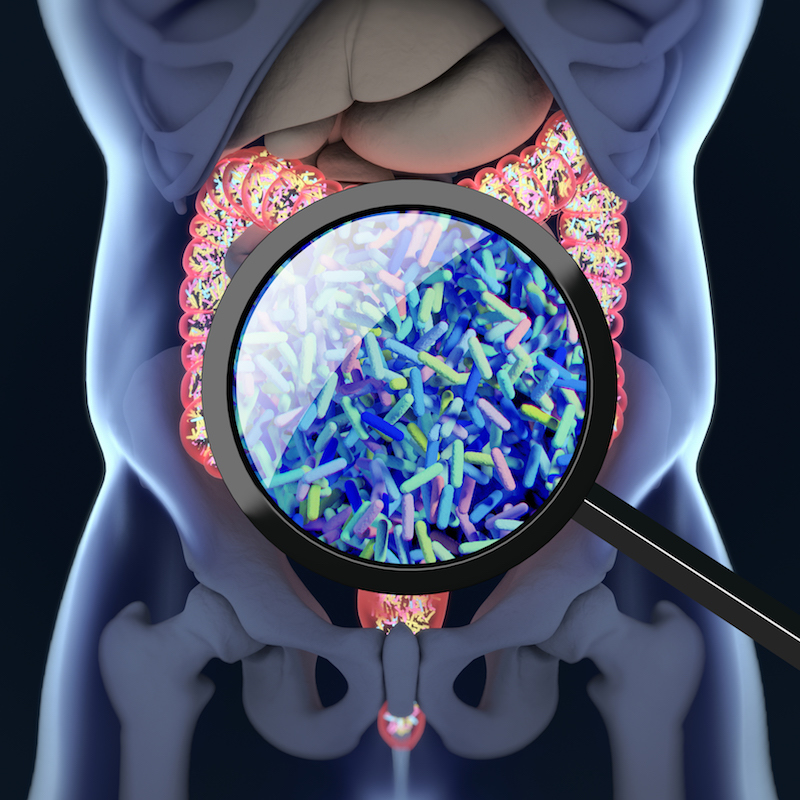Microbiome and Nutrition
The complex community of bacteria, yeasts and viruses living in our intestines, collectively known as the gut microbiome, is shaped, in part, by what we eat. Genetics, environment, and other factors also influence an individual’s microbial community. Research at the NRI investigates these complex relationships and their impact on disease risk. We use animal models and bioinformatics to study the associations between nutritional metabolites, gut microbiome, and health. What happens in the gut doesn’t stay in the gut. Your microbiome can play a role in cardiovascular disease, obesity and diabetes, and even cancer. Our team envisions a future where analysis of your microbiome can determine disease risk, and medical foods can be prescribed to treat and prevent disease by regulating the microbiome.
Publications
Microbiome and Nutrition Publications
2020
Population studies of TMAO and its precursors may help elucidate mechanisms. Meyer K
2019
Association of dietary patterns with the gut microbiota in older, community-dwelling men. Meyer K
2018
Meta-analysis of human genome-microbiome association studies: the MiBioGen consortium initiative. Meyer K
Human microbiota, blood group antigens, and disease. Sumner S
2017
Trimethylamine N-Oxide, the Microbiome, and Heart and Kidney Disease. Zeisel S
2016
Diet and Gut Microbial Function in Metabolic and Cardiovascular Disease Risk. Meyer K
Antibiotic-mediated gut microbiome perturbation accelerates development of type 1 diabetes in mice. Sumner S
Related News
Elicited Imitation Performance at 20 Months Predicts Memory Abilities in School-Age Children
Elicited Imitation Performance at 20 Months Predicts Memory Abilities in School-Age Children.
Riggins T, Cheatham CL, Stark E, Bauer PJ.
J Cogn Dev. 2013 Jan 1;14(4):593-606.
PMID: 24436638
Mechanisms and correlates of a healthy brain: a commentary
Mechanisms and correlates of a healthy brain: a commentary.
Cheatham CL.
Monogr Soc Res Child Dev. 2014 Dec;79(4):153-65. doi: 10.1111/mono.12135.
PMID: 25387420
New Faculty – Stephen Hursting, Ph.D., M.P.H.
The NRI is pleased to welcome Stephen Hursting, Ph.D., M.P.H., to its faculty. Dr. Hursting, an expert in diet and cancer prevention, trained at UNC Chapel Hill and directed research programs for 20 years at the National Cancer Institute and University of Texas. He...
Bonsai Expo, December 6 and 7
Bonsai aficionados will converge in Kannapolis at the North Carolina Research Campus this weekend, December 6 and 7 for the second annual Winter Silhouette Bonsai Expo. The ancient art of bonsai–the word means to plant in a container–is sometimes best appreciated when...
When Chimps Outperform Humans
From the desk of: Carol L. Cheatham, Ph.D. As a developmental cognitive neuroscientist, I’m always interested in learning about studies that will inform my work. Recently, I attended the International Conference on Infant Studies where I heard a scientist speak about...
Kannapolis' North Carolina Research Campus foresees growth
The following has been reprinted from Charlotte Observer, an article by Lisa Thornton. By the time they celebrate the North Carolina Research Campus’ seventh anniversary next year, leaders say, 10 buildings will have been erected on campus, and another two nearby. The...

